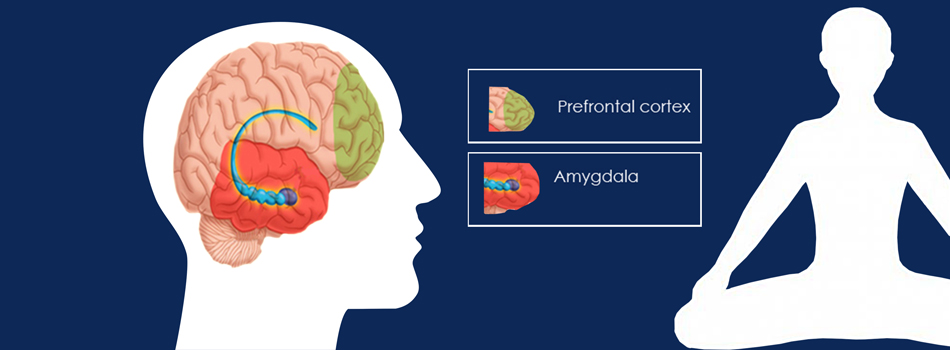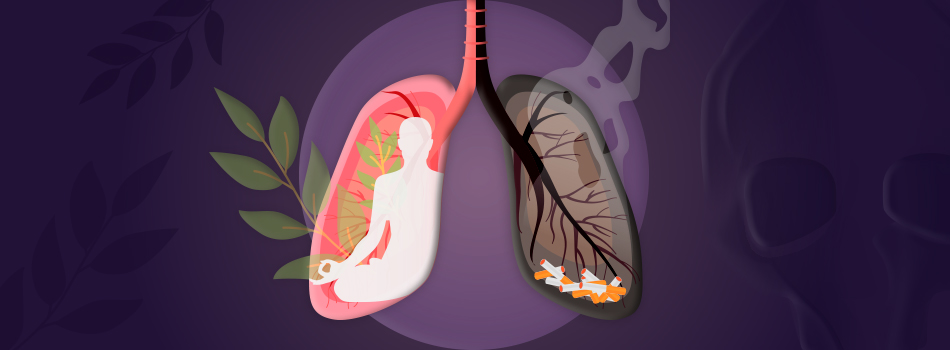
How meditation changes your brain
published : 2 April 2016
What makes us the way we are? Why are each of us unique? What makes some of us introspective and others outgoing; some of us pragmatic and others dreamy; some of us careful about every step and others addicted to taking risks? Depending on your beliefs, you may say God, our genes, our upbringing, our intentions, our religion, our culture, our eating habits, our zodiac sign, the first letter of our name, or even our blood type.
Some of these definitely have something to do with our personality, maybe all of them do. But we are not going to talk about our upbringing or our zodiac sign today, we are going to talk about our brain. Whatever we think, however we feel, whatever we do, there is a brain activity associated with it. We can perform subtle functions like threading a needle because of activity in the 'cerebellum'; we find things funny and start to laugh because of activity in a part called 'superior frontal gyrus'; and we feel tired because of activity in the 'brain stem'.
Each brain is unique
And each of our brains are unique. Activity in different parts of the brain varies from person to person. For example, studies show abnormally low brain wave activity coming from the temporal lobe and the limbic system of serial killers. Studies also show that the activity in the amygdala of a happy person rises much more in response to a positive incident than that of a less happy person.
Your brain has a ‘resilience’ part
Say both you and your friend dreamed of studying in the same top university, but neither of you made it through the admission process. Although initially disappointed, your friend quickly gets enrolled in the next best choice and gets excited about the new books, new friends and new prospects. Before long, he is so involved in his new life, he has hardly a thought to spare for the top university he used to dream of.
You, on the other hand, keep feeling like a complete failure. You relive the experience again and again and again in your mind. You can hardly concentrate on your new classes, feel nervous talking to your new classmates because you feel worthless inside, and are scared to dream again. Your life starts going in a downward spiral. People tell you to ‘get over it’, to ‘move on’, and you know that you should. But you just can’t do it.
Those who can bounce back easily when something bad happens are lucky. But what if you are one of those people who keep feeling bad about the break-up, the divorce, the loss of the parent, the exam you did badly in, or the job you lost for years and years?
Scientists have recently discovered the brain activity associated with ‘resilience’, meaning, how well and how quickly someone can bounce back from adversity.
For many years scientists have known that a part of our brain called the amygdala, located in the limbic system deep within the brain, becomes activated when we have feelings: whether they are negative emotions like fear, anger, anxiety, or positive emotions like happiness.
Scientists also knew that the prefrontal cortex, located just behind the forehead, is involved with thinking. It is because of the prefrontal cortex that human beings can judge and assess things, plan for the future, use reasoning, have preferences and concentrate on a subject.
It all depends on the 'thinking brain' and the 'feeling brain'
For many years scientists believed that ‘thinking’ and ‘feeling’, ‘cognition’ and ‘emotion’, had nothing to do with each other. Feeling bad about something had everything to do with the amygdala and nothing to do with the prefrontal cortex. But in a recent experiment, researcher Richard Davidson found that resilience, or the ability to drive away negative emotions, actually depend more on the activation of the prefrontal cortex than the amygdala.
The more activated your left prefrontal cortex is compared to your right prefrontal cortex, the more resilient you are. And the amount of activation in the left prefrontal region of a resilient person can be up to 30 times that of someone who is not resilient.
Dr. Richardson believes that the prefrontal cortex, or our ‘thinking brain’, sends signals to the amygdala, or our ‘feeling brain’, asking it to calm down. This is why those with greater activation in the left prefrontal cortex can easily move beyond their negative feelings, no matter how intense those feelings were in the first place.
This belief was confirmed when they found, thanks to MRI, that the more axons one has connecting the neurons between the prefrontal cortex and the amygdala, the more resilient a person is. Naturally, the stronger the connecting path between the 'thinking brain' and the 'feeling brain', the easier it is for the 'thinking brain' to control the 'feeling brain.'
Meditation grows your ‘resilient’ brain
If you are someone who finds it difficult to get over adversity, you must be thinking, "Great! I must have absolutely no activity in my left prefrontal cortex and no connection between the prefrontal cortex and the amygdala! I am destined to doom and gloom."
Here is where the good news comes. Scientists say our brain is plastic, which basically means that the structure and function of our brain can change significantly. And scientists have found that just as the activity in the brain helps shape the thoughts in the mind, repeated mental thoughts can help reshape the brain.
It has been proved that systematic mental practice, such as meditation, can change your ‘Emotional Style’, including making you more resilient.
Research has already shown that regular meditation leads to thickening of prefrontal cortex. Dr. Richardson shows that by learning to observe your thoughts and feelings at the meditative level, you can gradually become more resilient. Meditation helps weaken the links that keep us going over and over the upsetting incident. It also strengthens the connection between the prefrontal cortex and the amygdala, helping us remain calm.
Research also shows that meditation can change the brain in a way so that we feel less depressed or more empathy, or become more careful about the way we spend money!
The underlying message is simple. Time and time again, the universe shows us that with the power of our mind we can transcend any limitation, even if that limitation is within our own physiological system. Our genes are not our destiny, neither is our brain. We are the masters of our destiny. We just need to use the right tool to craft it.


















